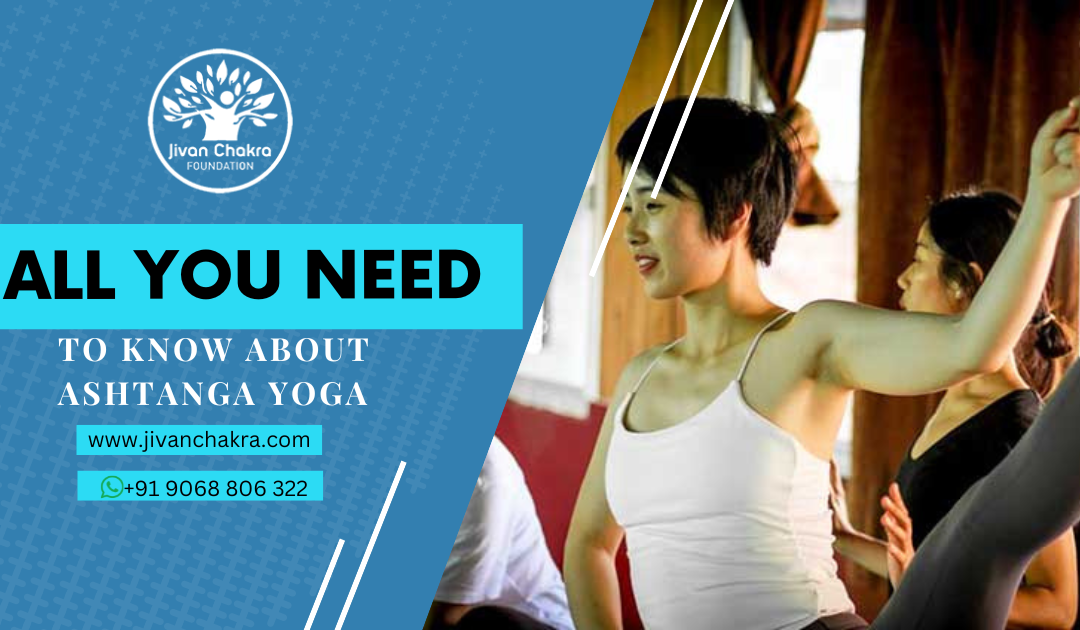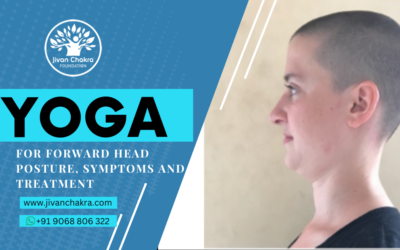We will talk about Ashtanga Yoga today to begin our investigation into the many types of yoga. Ashtanga yoga, hailed for many years on the other side of the Atlantic, is gradually finding its place in Europe for the best benefits.
100-Hour Yoga Teacher Training In Rishikesh is now regarded as a physically demanding discipline beyond meditation. Ashtanga is a very active and athletic form of hatha yoga, which includes six series or levels with a fixed order of postures. The benefits of a mild but complete and in-depth type of gymnastics are all available to the body via the rigorous and physical practice of Ashtanga yoga, which stimulates the entire body.
The Ashtanga yoga system is built around breathing. Therefore, practitioners need to improve their breathing, and they need to become more aware of it.
What is Ashtanga Yoga?
The Sanskrit words ‘Ashta’ and ‘Anga’ combine to form the English word Ashtanga. The term “Ashta” represents eight, and the word “Anga” refers to a limb or other physical part. Ashtanga is, therefore, the fusion of all eight limbs of yoga into a single, all-encompassing discipline. It is rooted in vinyasa, the flowing movements between poses, focusing on energy and breath. While it is a physical exercise, it promotes mental clarity and inner peace. The eight limbs of yoga taught by the Ashtanga Yoga School illustrate the various schools of philosophy found in the yoga sutras.
In Ashtanga yoga, the postures are so beautifully and successively composed that the body sings like a finely tuned instrument by the end of the practice. Furthermore, the sequence of postures in Ashtanga flows uninterrupted from one pose to the next. This flowing style is referred to as Vinyasa, and it is the basis of all the other yoga classes called Power yoga, Vinyasa yoga, or Flow Yoga. Ashtanga yoga is the style of breathing with the body and making it one of the most beautiful asana practices. However, it is demanding and rigorous, and one needs the determination to continue.
The Ashtanga school of thought integrates all eight limbs of yoga: Yama (moral precepts), Niyama (self-discipline), Asana (posture), Pranayama (breath control), Pratyahara (sense withdrawal), Dharana (concentration), Dhyana (meditation), and Samadhi.
Advantages of Ashtanga Yoga
Popular and practical, Ashtanga yoga is a subset of Hatha yoga. A series of postures are linked with the breath to form a continuous sequence in this physically demanding practice.
- A hallmark of Ashtanga yoga is its demanding physical practice. The fast-paced sun salutation poses promote energy focus inspired by the routines of Indian wrestlers and gymnasts.
- Stretching is an essential part of Ashtanga yoga for improving flexibility. Practitioners are advised to increase their range of motion to dive deeper into each position.
- Yoga practitioners can feel the stretch and hold the position more comfortably in this style of yoga because the poses are held for longer compared to other types, such as Bikram or Vinyasa.
- Since each posture calls for a particular degree of strength, many people view yoga as a demanding and taxing workout.
- The Ashtanga yoga technique is also beneficial for reducing back discomfort and improving general lower body strength. This style of yoga practice may significantly improve posture and lessen pain.
- Numerous stretches in this style of yoga may strengthen your body’s defense mechanisms. In addition, maintaining a strong mind-body connection via consistency and regularity can keep you healthy and content for years to come.
- Asanas can purify not only your joints and muscles but also your emotions. You can find harmony in your feelings and emotions by practicing Ashtanga.
- Ashtanga yoga enhances the respiratory and cardiovascular systems. Although the activity is demanding and draining, it’s a great way to maintain your fitness and improve your general health.
- The Ashtanga yoga postures are incredibly meditative and calming when done correctly. However, they call for a great deal of concentration, which is why they effectively improve mindfulness skills.
- You can increase your flexibility and balance by practicing Ashtanga yoga, which combines stretching and strengthening postures. As a result, it makes it likely that someone will get hurt while exercising.
- It also can lower blood pressure. By regularly utilizing this technique, you can reduce stress and anxiety, which can raise your blood pressure.
How is Ashtanga Yoga different from other yoga?
- The difference between Ashtanga Yoga and Vinyasa: The vinyasa approach, which harmonizes each position with the breath in a fluid movement, is derived from Ashtanga yoga. There are similarities between the two methods since they both boost power and body heat. An Ashtanga class allows for more freedom, which is the primary distinction between an Ashtanga class and a vinyasa class. Every vinyasa session you conduct will have a theme or critical pose your body is warming up to do.
- The difference between Ashtanga Yoga and Hatha Yoga: This is the main difference, just as there is no set order of postures in Hatha yoga. Hatha is substantially more static and passive than an Ashtanga class. Because hatha yoga focuses on going deeper into each position and gaining its benefits, transitioning out of each pose is only sometimes necessary.
- The difference between Ashtanga Yoga and Bikram: The postures in Ashtanga and Bikram yoga are performed in a specific order. The fundamental contrast is that Bikram is practiced in a heated room to 105 degrees, whereas Vinyasa and sun salutations are not. While Ashtanga has a more in-depth philosophical perspective and a more spiritually oriented aim in mind, both of these approaches are physically challenging.
Steps of Ashtanga Yoga
Yama: Yoga talks about how individuals develop. It starts with advice on balancing one’s inner and outer lives while adjusting to social life. The first two phases, Yama and Niyama, aim to build this balance. The terms “dos and don’ts” are commonly misused. However, they are essential guidelines for living a balanced existence. It encourages social harmony and tranquility.
Niyama: Five Niyamas influence human behavior, much like the Yamas. The five are Santosa (contentment), Tapas (self-control), Swadhaya (self-study, which can mean examining one’s nature and conducting research into one’s reality), and Iswara Pranidhana (totally accepting life and handling all circumstances in life with composure). It also implies that we should submit to God’s will.
Asana: Asana, or postures, are the next phase of ashtanga yoga. The yoga sutras define an asana as a secure and comfortable position (‘Sthiram Sukham Asanam’). Therefore, a prerequisite for more complex yoga techniques is the asana. Asanas can be poses created to increase strength, stability, and balance, or they can be stances for meditation (like Padmasana, Sukhasana, Siddhasana, etc.)
Pranayama: Pranayama is Ashtanga yoga’s fourth stage. Breath control is referred to as “pranayama.” Mind and breath are intertwined. One gains control over the mind and vice versa through controlling their breathing. Pranayama exercises aid in calming and centering the mind. Prana, or bio-energy, moves along Nadi or pranic routes. The practice of pranayama sometimes referred to as “Nadi Shuddhi,” helps purge these Nadis of impurities.
Pratyahara: Pratyahara directs the mind inward to prepare it for meditation. While disconnected from the senses and their objects in pratyahara, the mind is fully aware of its internal processes. There is a stage in mind called Pratyahara that occurs between internalizing and externalizing. It is in the center of the spectrum. At this point, the mind can delve deeper into its inner reality. Outside distractions are absent.
Dharana: Focus is the subject of Dharana, the sixth Ashtanga yoga step. In the Yoga Sutras, the word “Samapatti,” which means absorption, is used often. The mental state known as Dharana allows one to focus on a specific idea, object, or point.
Dhyana: Dhyana, the next stage of Ashtanga yoga, the traditional translation of this is meditation. It entails maintaining uninterrupted mental concentration on a single concept, thought, or object for a lengthy period.
Samadhi: The final Ashtanga Yoga level is called samadhi, hyper-awareness. When practicing dhyana or meditation, there comes the point where one loses self-awareness or the sense of “I.” At this point, the Samadhi state is formally initiated. At this point, the act of meditation, the focus of meditation, and the practitioner all become one. In reality, samadhi is a collection of feelings and sensations. The Yoga Sutras include descriptions of several samadhis. Therefore, you must go through many samadhi experiences. The highest state of enlightenment, called “Dharma Megha Samadhi,” which leads to Kaivalya and liberates the practitioner from all bodily and mental restraints, is finally attained by the practitioner.
Conclusion
Are you looking for a 100-Hour Yoga Teacher Training Course in Rishikesh that inquires about your mind and body? Then it would help if you tried out Ashtanga yoga. Ashtanga yoga is recognized for its hands-on adjustments and trains you to be a high performer. This spirit also guides you in improving other areas of life, including your daily habits.
This yoga form focuses on toning your muscles through deep abdominal work and strengthens your upper and lower body. By practicing it regularly, Ashtanga yoga gifts you strength, purpose, stamina, and radiant health.
For Yoga Teacher Training in Rishikesh and for more information Quick Enquiry
Contact Us on 9068 806 322 Or
Email At info@jivanchakra.com
Related Articles
Benefits Of Surya Namaskar | FAQS On Surya Namaskar
A set of 12 powerful yoga positions is called the Surya Namaskar, also referred to as the Sun Salutation. Surya Namaskar is well known for being a terrific cardiovascular workout and having a highly positive impact on the body and mind. It helps with weight loss and...
Yoga lessons from the Gita that may help enlighten our daily practice
The Bhagavad Gita (Sanskrit for “Song of the Lord”) is one of the world’s most renowned and valuable pieces of literature. The Gita in itself is a godly poem innate in the epic Mahabharata, which is one of the literature pillars of Hindu philosophy. This poem...
Yoga for forward head posture, Symptoms and Treatment
During the anatomy class, we talked about the skeletal system and how today’s digital habits have impacted our posture. The class that had the strongest impact on me was the one talking about the cervical and the forward head posture in particular, also called by the...




